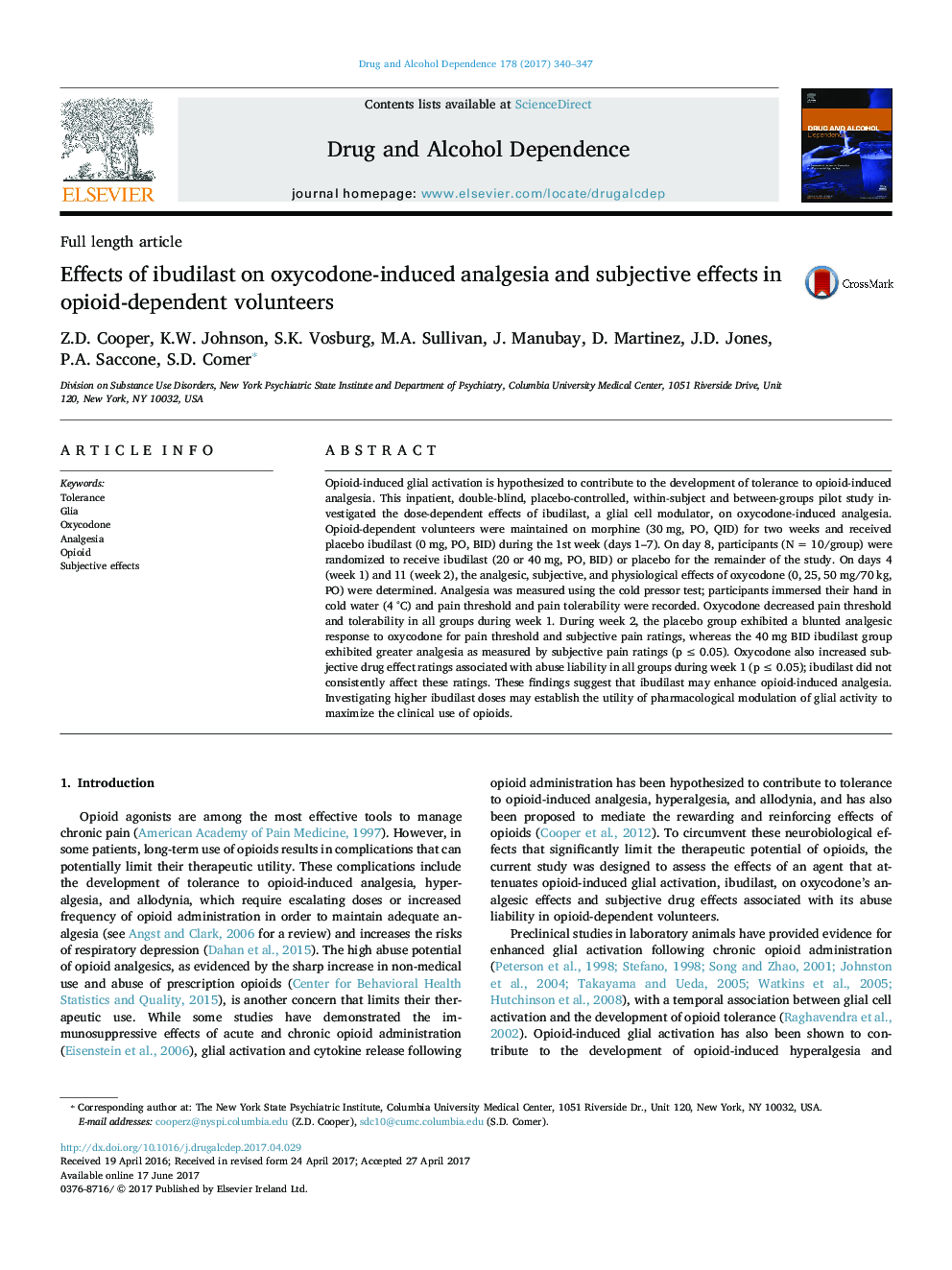| Article ID | Journal | Published Year | Pages | File Type |
|---|---|---|---|---|
| 5120362 | Drug and Alcohol Dependence | 2017 | 8 Pages |
â¢A double-blind, placebo-controlled study of the effects of ibudilast on oxycodone.â¢Tolerance to oxycodone analgesia was observed in the placebo ibudilast group.â¢Oxycodone analgesia was enhanced in the 40 mg twice per day (BID) ibudilast group.â¢Ibudilast did not consistently affect oxycodone's subjective effects.
Opioid-induced glial activation is hypothesized to contribute to the development of tolerance to opioid-induced analgesia. This inpatient, double-blind, placebo-controlled, within-subject and between-groups pilot study investigated the dose-dependent effects of ibudilast, a glial cell modulator, on oxycodone-induced analgesia. Opioid-dependent volunteers were maintained on morphine (30 mg, PO, QID) for two weeks and received placebo ibudilast (0 mg, PO, BID) during the 1st week (days 1-7). On day 8, participants (N = 10/group) were randomized to receive ibudilast (20 or 40 mg, PO, BID) or placebo for the remainder of the study. On days 4 (week 1) and 11 (week 2), the analgesic, subjective, and physiological effects of oxycodone (0, 25, 50 mg/70 kg, PO) were determined. Analgesia was measured using the cold pressor test; participants immersed their hand in cold water (4 °C) and pain threshold and pain tolerability were recorded. Oxycodone decreased pain threshold and tolerability in all groups during week 1. During week 2, the placebo group exhibited a blunted analgesic response to oxycodone for pain threshold and subjective pain ratings, whereas the 40 mg BID ibudilast group exhibited greater analgesia as measured by subjective pain ratings (p â¤Â 0.05). Oxycodone also increased subjective drug effect ratings associated with abuse liability in all groups during week 1 (p â¤Â 0.05); ibudilast did not consistently affect these ratings. These findings suggest that ibudilast may enhance opioid-induced analgesia. Investigating higher ibudilast doses may establish the utility of pharmacological modulation of glial activity to maximize the clinical use of opioids.
